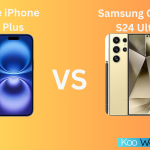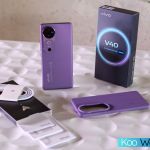According to BusinessKorea, Xiaomi has made an initial step in consolidating a presence in South Korea: the company has established an independent subsidiary, Xiaomi Technology Korea, hosted in the Mirae Asset Center Building 1. The office, with approximately 20 employees, is now set on preparing for an official release after finalizing business strategies that would make its good presence felt in the challenging Korean market.
Breaking into a Tough Market
So-called “the graveyard of foreign mobile phones, ” South Korea’s challenges for overseas brands cannot be stronger. But never mind this, Xiaomi’s strategy now has put strong enthusiasm into raising the level of its market penetration. Up till now, it mainly sells its home appliances and unlocked versions of smartphones through distributors, but by establishing a local subsidiary, it is committed to a gear shift-by partnering with local mobile carriers to demonstrate itself as a “comprehensive technology company.”. Flagship Smartphones and Expanded Product Lines
A leading strategy of the company is, for sure, the releasing of flagship smartphones, including those released under the series of Xiaomi 15, with more than 1 million sold in only two months after the product launch date in China. The release of both flagships and budget-friendly phones shows the key strengths of Xiaomi-innovation and affordability. Xiaomi wants to further diversify its portfolio in South Korea by offering other hot items like smartwatches, robotic vacuum cleaners, and other best-selling products to expand its ecosystem toward local consumers.
Retail Expansion and Operator Partnerships
The company will open its first offline stores targeted at young people who are sensitive to new technology gadgets in vibrant areas like Gangnam, Hongdae and Seongsu-dong in Seoul in a bid to reinforce its brand presence: Mi Home.
Besides, Xiaomi is in discussion with South Korea’s three top wireless carriers for tie-ups: SK Telecom, KT, and LG Uplus. While the carriers have sold Xiaomi’s mid-range series Redmi, joint marketing efforts for flagship models like the Xiaomi 15 could transform its fortunes in the Korean market.
Global Standing and Local Aspirations
The Chinese powerhouse currently stands third in the global smartphone shipment, while Samsung and Apple are holding the front two positions with a 14% share of the market. Xiaomi is trying harder to stir up this market in South Korea with its more focused approach, greatly localized, by using an innovation-driven product portfolio at accessible prices. With Xiaomi Technology Korea in its final stages of preparation for an official launch, it is pretty much clear that the company sees huge potential in South Korea-a market which could be used as a proving ground for Xiaomi’s capability to compete in one of the most unforgiving regions for foreign tech brands.


HyperOS Downloader
Easily check if your phone is eligible for HyperOS 2.0 update!





